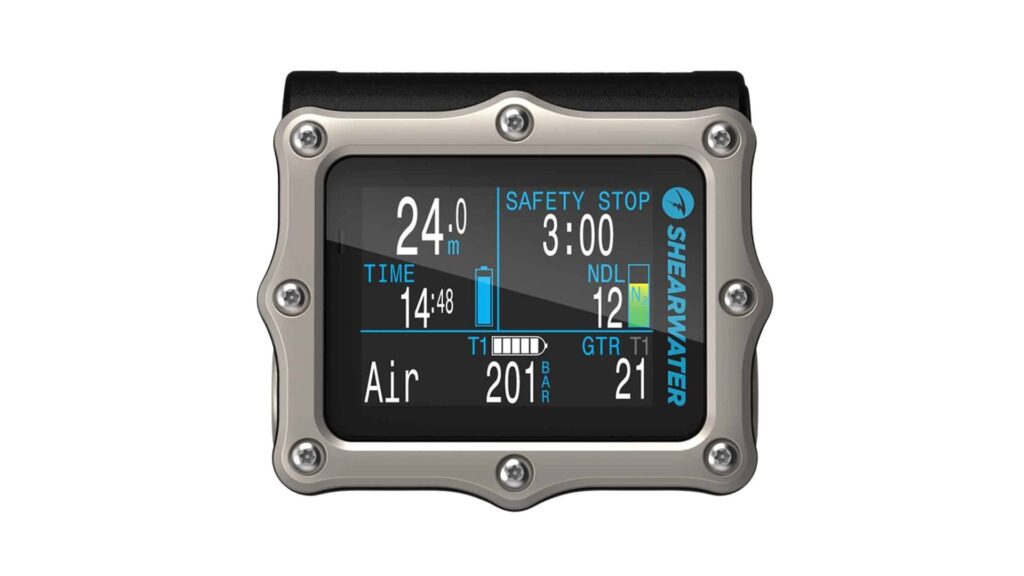Scuba diving opens up a world of underwater wonders, such as at the vibrant kelp forests of La Jolla off the coast of San Diego. To ensure safety and enhance the diving experience, owning a personal dive computer is not just a luxury—it’s a critical piece of equipment. Having your own dive computer offers reliability, personalization, and peace of mind. This article explores why owning a dive computer is essential and highlights the key features to look for, with insights for diving in iconic locations like La Jolla, as offered by the experienced team at DiveInScuba.com.
The Importance of Owning Your Own Dive Computer
1. Safety Through Consistency
A dive computer is your underwater lifeline, calculating critical data like depth, dive time, decompression limits, and ascent rates to minimize the risk of decompression sickness (DCS). When you own your dive computer, you’re familiar with its interface, alarms, and settings, reducing the risk of misinterpretation during a dive. Renting a computer from a dive shop, while convenient, is less than ideal because you likely will not be familiar with that particular model and—if used within the last 24 hours—the computer may be tracking residual nitrogen from previous dives.
2. Personalized Dive Profiles
Your dive computer tracks your dive history, allowing for personalized calculations based on your previous dives. This is crucial for multi-dive trips, such as exploring La Jolla’s kelp forests, canyons, and sea caves, where repetitive dives are common. A rented computer resets with each user, so nitrogen loading estimates may not be accurate.
3. Cost-Effectiveness Over Time
While the upfront cost of a dive computer may seem high, frequent divers save money compared to repeated rental fees. Owning your computer eliminates recurring costs, allowing you to invest in quality equipment tailored to your needs.
4. Enhanced Dive Experience
A personal dive computer lets you customize settings to match your diving style, whether you’re exploring La Jolla’s shallow seagrass meadows or venturing into the deeper La Jolla Canyon (up to 130 feet). Features like audible alarms and dive logs help you focus on the underwater beauty—think sea lions, garibaldi, and horn sharks—without worrying about manual calculations.

Key Features to Look for in a Dive Computer
When choosing a dive computer, prioritize features that enhance safety, usability, and compatibility with your diving environment, such as the temperate waters of La Jolla. Here are the most important features to consider:
1. Algorithm and Decompression Models
The dive computer’s algorithm determines how it calculates safe dive times and decompression stops. Look for models using reliable algorithms like Bühlmann or RGBM, which are suited for recreational diving in varied conditions like La Jolla’s nutrient-rich waters. Ask a professional instructor at diveinscuba.com if you have questions.
2. Display and Readability
A clear, backlit display is essential. Opt for a computer with large, high-contrast digits and customizable brightness for easy reading at depth.
3. Air Integration
Air-integrated dive computers monitor your tank’s air supply, calculating remaining bottom time based on breathing rate. Wireless air integration reduces hose clutter, enhancing comfort during kelp forest explorations.
4. User-Friendly Interface
Choose a dive computer with an intuitive menu and buttons or touchscreen that’s easy to navigate, even with gloves. Familiarity with the interface prevents confusion during dives.
5. Battery Life and Rechargeability
A long-lasting or rechargeable battery is crucial for multi-dive days in La Jolla, where you might explore both the Cove and Canyon. User-replaceable batteries or USB-rechargeable models ensure reliability without depending on dive shop availability.
6. Dive Modes and Versatility
Look for a computer with multiple modes (air, nitrox, gauge, freedive) to accommodate various dive types. At La Jolla Shores, nitrox compatibility is useful for extending bottom time and exploring the canyon at depths from 60 to 100+ feet.
7. Dive Log and Connectivity
A dive computer with digital logging and Bluetooth connectivity allows you to download your dives to a laptop or mobile device, keeping a record of your experience and enabling post-dive analysis.
Diving in La Jolla: Why a Dive Computer Matters
La Jolla, off the San Diego coast, is a world-class dive destination, renowned for its vibrant marine life, kelp forests, and sea caves. Sites like La Jolla Cove and Shores offer diverse ecosystems, from seagrass meadows teeming with nudibranchs to canyons hosting octopuses and lobsters. However, the area’s temperate water, variable visibility, and occasional surge make a personal dive computer indispensable for safe navigation and dive planning.
DiveInScuba.com offers certifications such as the deep diver and self-reliant diver courses that will educate you on dive theory and practice with your dive computer. A personal dive computer ensures you’re prepared for a great dive.
Conclusion
Owning your own dive computer provides safety, personalization, and reliability. For divers exploring La Jolla’s vibrant underwater world, a dive computer with a robust algorithm, clear display, air integration, and versatile modes is essential to navigate the kelp forests, caves, and canyons safely. By investing in a quality dive computer, you empower yourself to dive confidently. Remember — a safe diver first seeks the best training available, and by having a dive computer, is always aware of their exact depth, air consumption, time, and no-decompression limit during a dive.

